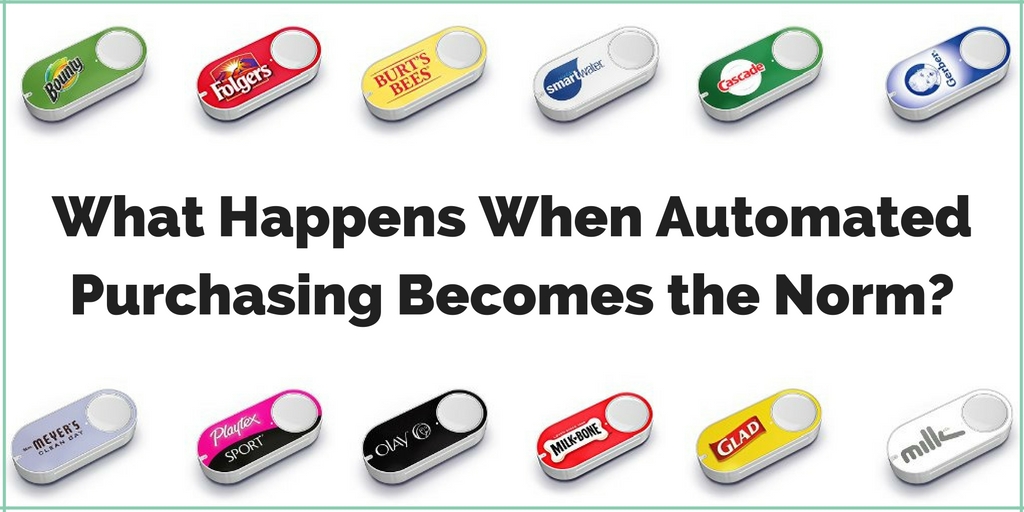
by Fronetics | Nov 28, 2016 | Blog, Content Marketing, Marketing, Social Media
Supply chain companies can use influencers in their prospects’ network as a strategic tool to gain new business.
The term “influencer marketing” often brings to mind celebrities endorsing their favorite brand of bottled water or jeans — not an image that is particularly useful for B2B businesses. However, B2B marketers should be taking this powerful trend in content marketing seriously.
While your supply chain may not benefit from an endorsement by Jennifer Aniston, you likely have brand influencers at your fingertips, which you may not even realize. Effectively leveraging these endorsements is a strategic tool for gaining new business.
Developing an influencer marketing strategy
Once you’ve identified your natural influencers, here are three important steps for building an influencer marketing strategy for your company.
1) Know your target buyer.
Rather than a scatter-shot approach, making the effort on the front end to identify your target buyer personas allows you to strategically target your customers. Understanding their needs, challenges, and purchasing structures is the key foundation to any content marketing effort, and influencer marketing is no exception.
2) Identify your industry influencers.
Industry influencers aren’t just the big names, though those people are certainly influential. It comes down to how your buyers make their purchasing decisions. The 2016 B2B Buyer’s Survey Report found that nearly half of B2B buyers use peers and colleagues as a major information resource when choosing a vendor.
Who are those peers and colleagues whom your target buyers turn to? Use every resource at your disposal to determine how they get their information. Connecting on LinkedIn, Twitter, and other social networks is a great way to do this.
3) Use the right tools for your business.
Any effective content marketing strategy depends on using the most effective tools. In a post for CMS Connected, Leah Kinthaert makes a strong pitch for Twitter. She cites the ease of plugging in a hashtag or keyword in giving you “volumes of information — from who the influencers are in that industry to what today’s breaking news is on the topic.” Furthermore, clicking on a hashtag shows you what your competition is doing as well.
The bottom line is that influencer marketing can be an extremely effective aspect of a B2B business’ content marketing strategy. Knowing your buyers, finding your influencers, and effectively leveraging this information will help boost your social credibility, as well as generating new business.
Related posts:

by Fronetics | Nov 22, 2016 | Blog, Content Marketing, Marketing, Strategy
By repurposing and thoughtfully packaging the content you have already published, you can assist your sales force in closing deals.
How many of your sales force’s calls turn into appointments? Probably very few. More and more of today’s buyers don’t want to speak with sales reps about products.
But, then, who will buyers speak to? A LinkedIn survey of 1,500 purchasers and influencers found that 86% of buyers will listen if sales professionals provide insights about their business. What’s more, 92% of buyers engage with a professional if that person is a known industry thought leader.
So, what if your sales force approached prospects not as a sales representative, but as a source of information, insight, and thought leadership? What if you already had the tools to help your sales staff achieve this reputation? If you are publishing original content, then you do.
Let them have content
Arm a sales rep with targeted content to share with prospects during specific moments in the purchase process, and it will advance his or her reputation as a source of knowledge. That can be the key to getting a foot in the door, advancing through the final stages of a purchasers’ decision, or closing the deal.
Here are four easy ideas for repurposing the content you have already created to assist your sales force.
1. Simply share.
Encourage sales representatives to follow your company and its content producers on social media and to share relevant articles with their networks. They can repost both your original content and curated articles as well.
2. Get visual.
Turn your evergreen content into easy-to-read infographics or another visual format. Send with the sales representatives to meetings with prospects, or encourage them to email the content to certain contacts as a lead-nurturing exercise.
3. Gather news.
In planning your content, you likely consider industry news, trends, and happenings. Keep a list of these points and supporting articles, and have the sales team distribute to their contacts on a regular basis, like a newsletter, to demonstrate knowledge of the business landscape.
4. Build case studies.
Develop several case studies from your company’s success stories. Organize them around specific pain points that your buyer personas face. Provide these to the sales team with a list of key points from each study to use as either talking points or to send as follow-up emails to prospects facing the same challenges.
These are a great starting point for bridging the gap between the marketing department and sales force with content. But don’t let it stop there.
Set up a role-playing exercise with your sales team, where you are the customer. Analyze their pitch and see how content can fill the holes. It’s likely you have built a lot of content around many of the reps’ talking points, which they can use to further inform their pitches and to use as lead-nurturing collateral.
Related posts:

by Fronetics | Nov 21, 2016 | Blog, Content Marketing, Logistics, Marketing, Supply Chain
Fronetics invites you to participate in a survey on how companies in the logistics and supply chain industries use content marketing.
If there’s one thing we can say about the ever-changing B2B marketing climate, it’s just that: it’s ever-changing. Keeping pace with shifting industry trends, innovations, and challenges can be daunting. But knowledge is power when it comes to creating a vital and robust marketing strategy.
In 2014, Fronetics decided it was time to gather hard data on how logistics and supply chain companies were using modern marketing tools like content. We conducted an industry-wide survey, gathering a valuable snapshot of the marketing landscape.

Now it’s time for another look at the data. So Fronetics invites you to participate in our 2016 surveys on content use in the logistics and supply chain industries. The survey takes about 3 minutes to complete, and no personal or company data will be reported. Additionally, you can indicate your preference to receive the completed report.
Key findings from the 2014 content use report point to companies using content primarily to build brand awareness and generate leads, with blog posts being the most popular content format. While all respondents reported using content marketing for a relatively short time, the majority had already seen a positive impact on their business.
Fronetics is curious to know, two years later, about the ongoing impact of content marketing. In addition, we’d like to find out if the industry is using content in new ways. Has content use expanded? Are blogs still the most popular format? What challenges are B2B companies facing when it comes to content creation and distribution?
The answers to these and more questions can provide vital insights as you shape your company’s marketing strategy for the future. Especially when it comes to modern marketing techniques, knowledge is power.
Take the content survey by clicking on the button below. Be sure to indicate your preference to receive the results. We look forward to your responses!

Related posts:

by Fronetics | Nov 15, 2016 | Blog, Content Marketing, Marketing
People don’t want to read it. It does you no good. So why are you still using your blog to talk about your business?
It seems like a natural use for your company blog. But I’m here to tell you that writing about your products, services, and business is hurting your blog more than it’s helping it.
You shouldn’t write posts to push certain products. You shouldn’t conclude every post with promotional language about your company and what it does. In fact, your business should be virtually invisible in your blog content.
That may seem counterintuitive to some. But it all goes back to basic content marketing principles: Demonstrating expertise and building trust will drive profitable customer action when the customer is ready to purchase.
Why your sales pitch is bad for business
Today’s consumers have no tolerance for overt, interruption-based marketing. You can probably think of examples from your own life to prove this point.
For example: when you’re trying to find something to watch on TV, how often do you stop on a channel to watch a commercial? Probably never, right? If you’re flipping around, it’s probably because you’re looking for content that is appealing to you, not seeking advertisements.
Or, consider this scenario: You are in the market for a new car. You’ve done extensive research on different makes and models and have narrowed your list down to a choice few. You head to the dealership to do a few test drives. Once there, you are greeted by an enthusiastic salesman. Brushing aside your questions, he launches into his pitch about his dealership’s unbeatable prices and repeatedly pushes a model that you that isn’t what you’re looking for. Turned off by his tactics, you make a quick exit.
Remember those two examples when you think about blog readers and internet browsers. They have their pick of the 27 million pieces of content shared on the internet every day. If they sense a sales pitch, they’ll ex out of your website faster than a Google search query.
What’s more, studies show that B2B buyers are about 60% of the way through the purchase decision-making process before ever engaging with a sales person. That means they are actively avoiding sales pitches in favor of their own research. If your blog is just another avenue to pitch your products and services, your content will fall on deaf ears.
Well, then, what should you write about?
DemandGen’s 2016 B2B Buyer’s Survey Report offers some interesting insight on why buyers end up choosing a particular vendor. After timeliness of vendor response (98%), 97% of respondents said that the winning vendor “demonstrated [a] stronger knowledge of the solution area and business landscape.” Not that the vendor had the most modern products. Not that they got the best deal. That the vendor understood the solution area and business landscape.
That’s what your blog should be all about.
Write about the problems your products solve (without mentioning your products). Write about the kinds of businesses you can help (without mentioning your name). Use content to demonstrate your expertise and to inform prospects about the solution area and business landscape in which your clients operate.
See, it’s not about you. It’s about them. They want a vendor who understands their pain points and how their business operates. If you and your content provide value, offer information, and demonstrate expertise, your audience will come to know you as a trusted source of knowledge.
And that’s who buyers purchase from. Vendors who understand their business. Not those that can only talk about themselves.
So, please, don’t use your blog to push your products or your business. Salesy and self-promotional language will only turn buyers off. Instead, use this platform to show your prospects that you understand their situation, and they’ll come running when it’s time to make a purchase, no sales pitch required.
Related posts:


by Fronetics | Nov 14, 2016 | Blog, Content Marketing, Logistics, Manufacturing & Distribution, Marketing, Social Media, Supply Chain, Transportation & Trucking, Warehousing & Materials Handling
Fronetics is conducting a survey to determine the benefits and challenges of social media for companies in these industries.
Two years ago, Fronetics surveyed a number of individuals working in the logistics and supply chain industries, including those employed by manufacturing, warehousing, and transportation companies. The survey’s goal was to find out how these companies were using social media, and if they were realizing any benefits or encountering any challenges by participating.
Interestingly, 100% of respondents reported having used social media for 5 years or less. Despite this relatively short implementation period, the majority (68%) said that their companies had already realized benefits from participation — primarily increased engagement with customers, increased market intelligence, and increased business intelligence.
As things go in the technology space these days, social media looks quite different than it did two years ago. What’s more, companies in these industries have, presumably, been using these tools for longer. Have a better understanding of social platforms and more opportunities for businesses impacted the benefit to users?
Fronentics is conducting a new survey to find out. We invite individuals working in the warehousing, manufacturing, and transportation industries — or those in other supply chain and logistics fields — to participate.
The survey takes about 3 minutes to complete. Responses will be reported in aggregate, and no identifiable information (individual or company) will be shared.
We look forward to hearing about your experience with social media!

Related posts:

by Fronetics | Nov 10, 2016 | Blog, Content Marketing, Marketing
Just as purchases are becoming more automatic, generating marketing content also needs to keep up with the times.
Automated purchasing systems are more and more in vogue, opening another avenue for strong content marketing to reign.
Did you know with the simple touch of a button, consumers are able to receive boxes of cereal, bags of coffee, and jugs of laundry detergent with hardly a thought? Amazon’s latest offering — the Dash Button — is a branded wireless device that allows consumers to efficiently order products right when they think of it. Customers can strategically place the button in their pantry, for example, so they can easily reorder supplies when reaching for the last bottle of water or opening the last bar of bath soap.
“Subscribe and save” programs available through retail giants such as Amazon and Target are another way to keep consumers stocked with the supplies they need. These items arrive on a pre-set schedule without the buyer even having to think about it. And subscription-based sales models offered by Dollar Shave Club, Starbucks, and Blue Apron keep consumers clicking through, adding big bucks to corporate coffers.
Influencing the preprogrammed bots
The robotization of consumer spending is changing the current model of marketing, advertising and shopping, according to a recent Harvard Business Review article, and marketers need to be prepared for the next level of automation in order to keep revenues streaming.
If this automation crosses into the B2B marketplace, suppliers will face new challenges — including finding ways to affect choices of preprogrammed “bots,” such as Amazon’s Dash Button. In this possible and increasingly likely world, HBR posits that advertising dollars will be diverted from traditional models to building relationships, challenging incumbents, increasing rates of consumption, and influencing marketing algorithms.
One such algorithm analyzes products that are pre-selected as the default brand in the item’s software (think: the scurry to become Apple’s default map program). Fresh and tailored content that even bots can process will be paramount to targeting content to buyers.
Content that educates the people behind the bots
In this future scenario, what can brands do to win business from competitors?
Certainly, it will take a significant effort to persuade a customer to change the algorithm’s default settings to another product or service. Vendors will have to produce highly targeted, personalized content that demonstrates a deep understanding of the customer’s business and how their product or service will better suit their needs.
Interestingly enough, that’s a preference that we’re already seeing among B2B buyers.
In the 2016 B2B Buyer’s Survey Report, 69% of buyers said relevant content that speaks directly to the company is very important, signaling that personalized content packages equate to satisfied customers and potential customers.
Using content to build relationships will continue to be of utmost importance, even in the age of bot-to-bot purchases. Optimize content to include buzz phrases and recognized keywords, and even bots will get the message.
Related posts:










